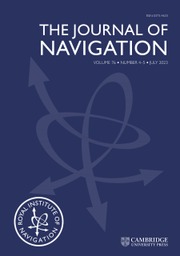No CrossRef data available.
Article contents
Review of ship navigation safety in fog
Published online by Cambridge University Press: 10 February 2025
Abstract
In the contemporary maritime industry, characterised by intense competition, reduced visibility due to heavy fog is a primary cause of accidents, significantly impairing maritime operational efficiency. Consequently, investigating foggy weather navigation safety holds crucial practical significance. This paper, through an analysis and synthesis of various aspects of foggy navigation technology, including foggy navigation regulations at different ports, fog warnings, foggy vessel environmental perception and foggy auxiliary navigation systems, explores the key issues concerning vessel navigation during foggy conditions from a scientific perspective. This discussion encompasses the aspects of regulatory frameworks, standardisation, and the development of intelligent and responsive onboard equipment. Finally, the paper offers a glimpse into potential strategies for fog navigation.
- Type
- Review Article
- Information
- Copyright
- Copyright © The Author(s), 2025. Published by Cambridge University Press on behalf of The Royal Institute of Navigation



